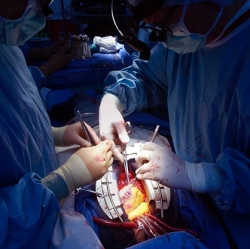
It’s believed that in the earliest stages, when treatment may prove more effective, the body is full of molecular clues. Called biomarkers, these molecules associated with diseases may provide enough for diagnosis. Owlstone Nanotech Ltd, has developed a kind of "breathalyzer" to detect the biomarkers indicative of cancer.
The device, called LuCID (lung cancer indicator detection), uses a small chip to analyze a patient’s breath for signature volatile organic compounds (VOCs) associated with the disease. Owlstone cofounder, Billy Boyle, describes LuCID as a “sniffer dog on a mobile phone.” The hope is such compact diagnostic devices will one day make it into doctor’s offices, and maybe even into our homes. LuCID will begin a clinical trial in two UK hospitals this summer with results expected in early 2016.
But Owlstone isn’t the only team working on such tech.Another group, out of Chongqing University in China, recently published a paper on their own lung cancer "breathalyzer." The device, a sensor array on a circular plate paired with a rotary gas chamber, also detects lung cancer associated VOCs at very low concentrations, below 50 parts per billion, they say.
To scale, one part per billion is like a pinch of salt in 10 tons of potato chips. The Chinese device has shown great promise in the lab, accurately detecting concentrations of cancer-related biomarkers in a process that takes only 20 minutes. However, they still have to prove the device in wide clinical trials.
